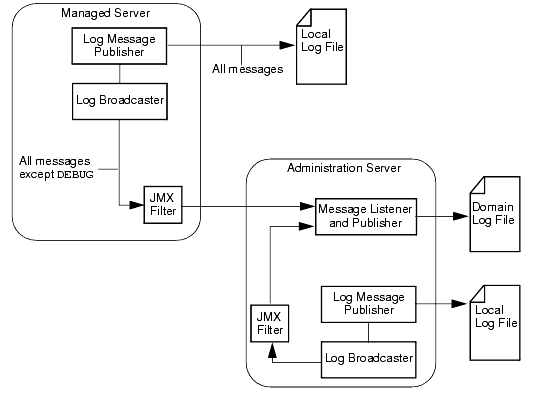Overview of WebLogic Logging Services
The WebLogic Server logging services include facilities for writing, viewing, filtering, and listening for log messages. While WebLogic Server subsystems use these services to provide information about events such as the deployment of new applications or the failure of one or more subsystems, your application can also use them to communicate its status and respond to specific events. For example, you can use WebLogic logging services to keep a record of which user invokes specific application components, to report error conditions, or to help debug your application before releasing it to a production environment. In addition, you can configure your application to listen for a log message from a specific subsystem and to respond appropriately.
Because each WebLogic Server administration domain can run concurrent, multiple instances of WebLogic Server, the logging services collect messages that are generated on multiple server instances into a single, domain-wide message log. You can use this domain-wide message log to see the overall status of the domain.
To provide this overview of a domain's status, each server instance broadcasts its log messages as Java Management Extensions (JMX) notifications. A server broadcasts all messages and message text except for the following:
- Messages of the DEBUG severity level.
- Any stack traces that are included in a message.
The Administration Server listens for a subset of these messages and writes them to the domain log file. To listen for these messages, the Administration Server registers a JMX listener with each Managed Server. By default, the listener includes a filter that allows only messages of severity level ERROR and higher to be forwarded to the Administration Server. (See Figure 1-1.)
Figure 1-1 WebLogic Server Logging Services

The remainder of this document describes how your application can write, filter, and subscribe to messages, and how you can view messages through the WebLogic Server Administration Console.
|
|
|